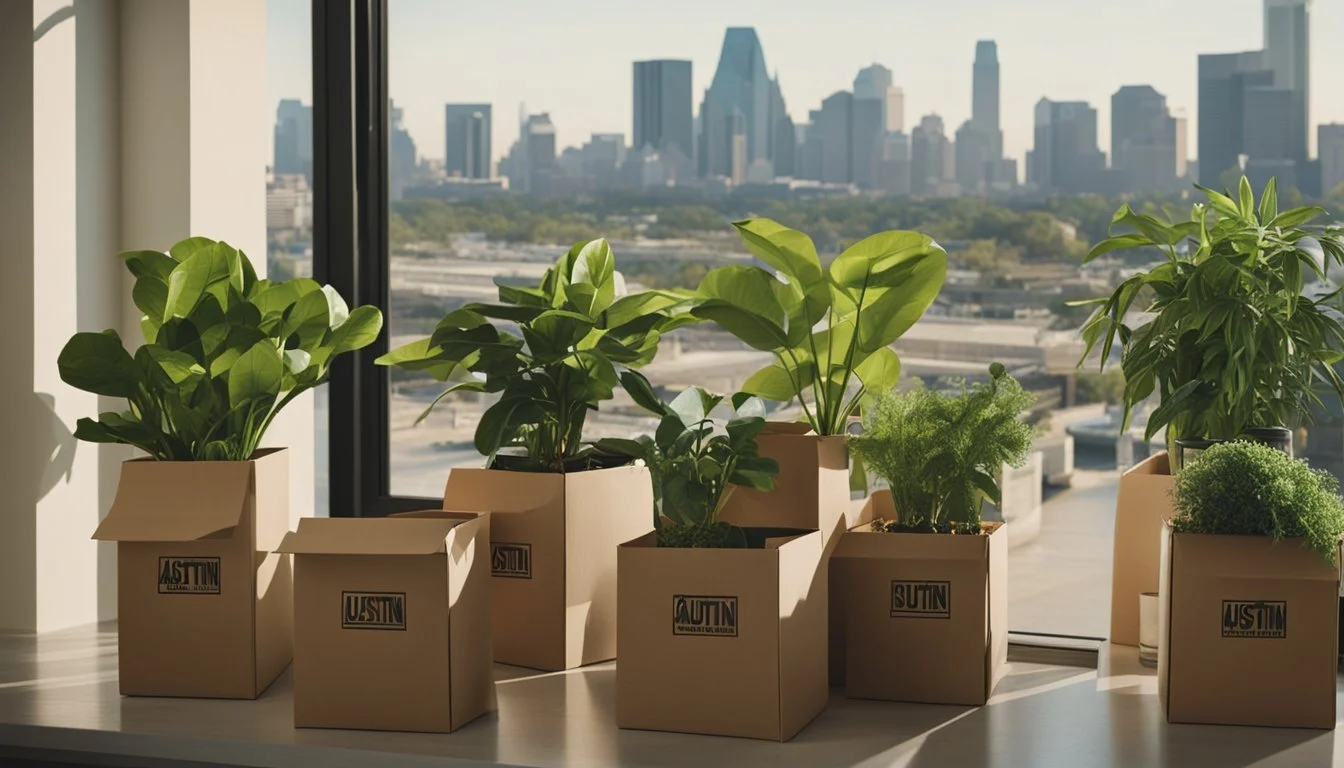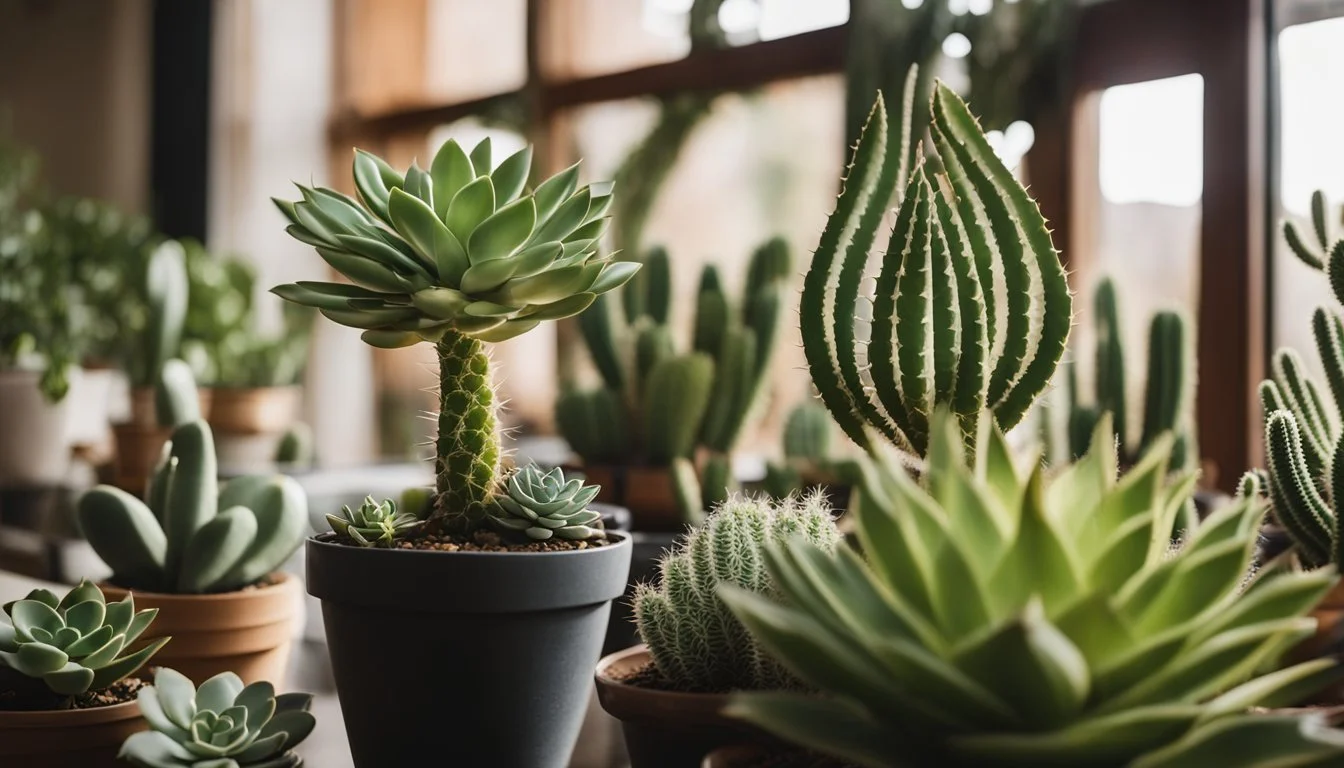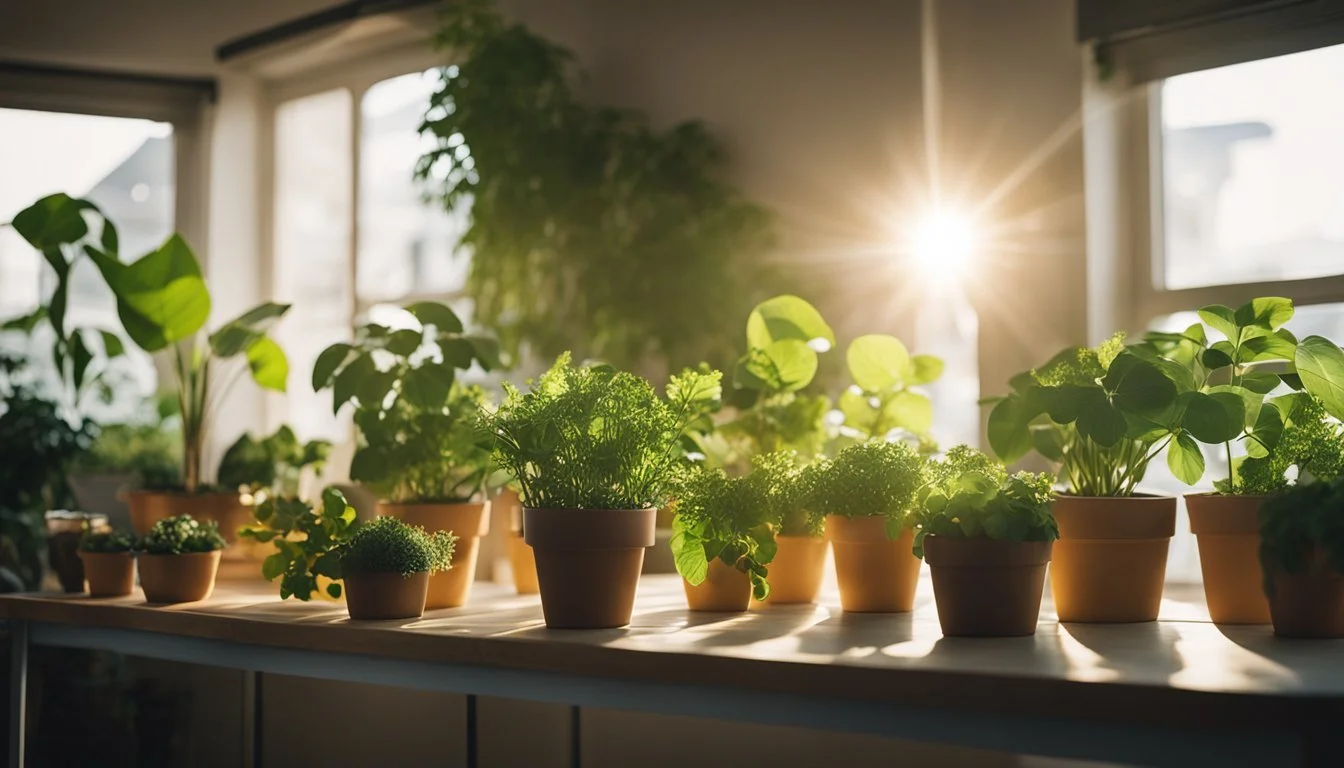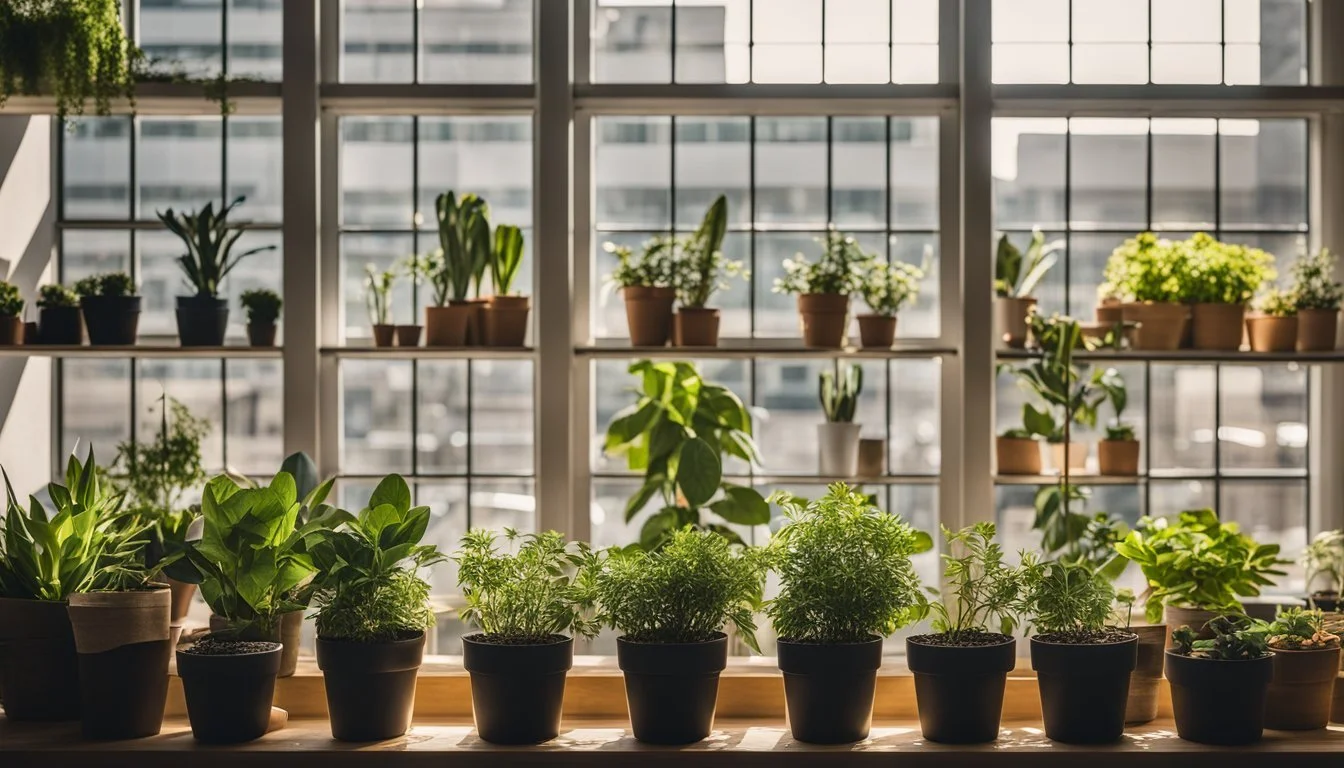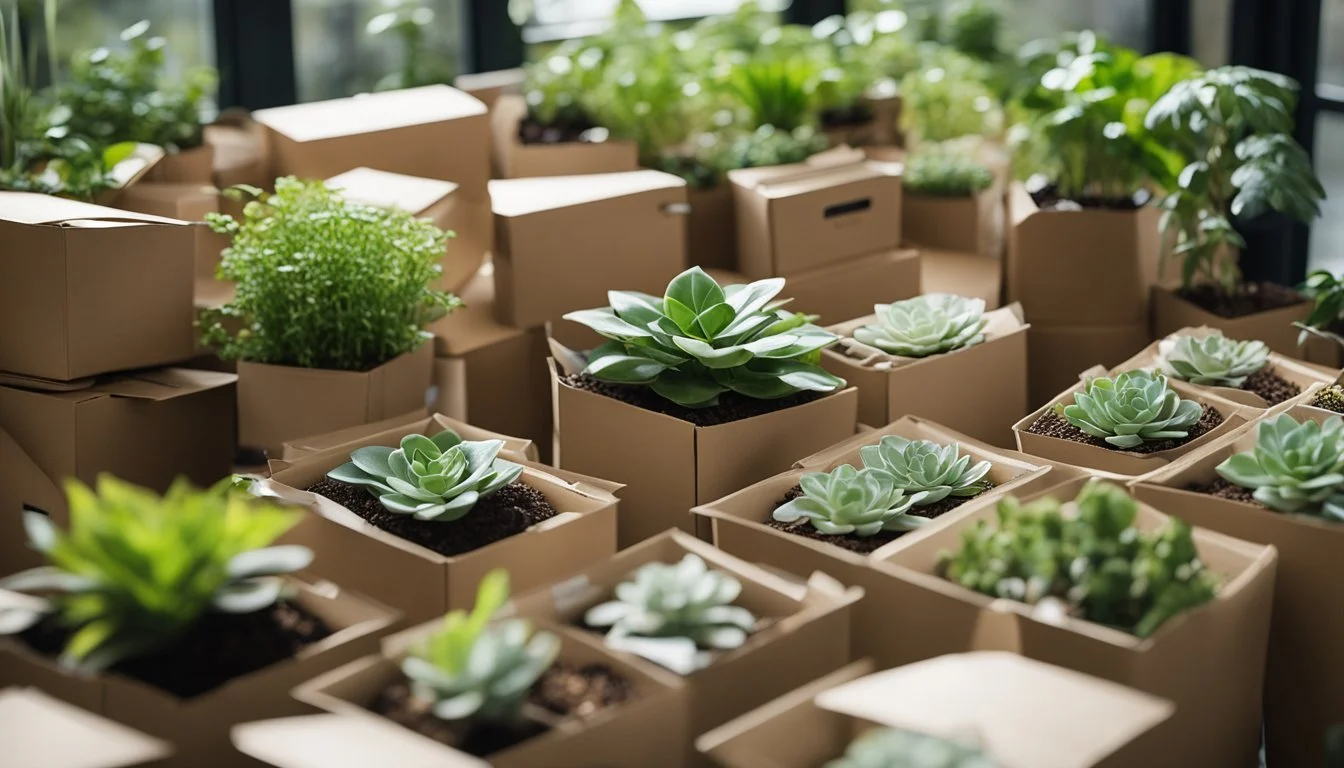How to Move to Austin with Houseplants
Essential Tips for a Smooth Transition
Moving to Austin with houseplants can be seamless and stress-free with a bit of preparation and care. Austin's climate varies, so knowing how to protect your plants during the journey is crucial. Watering your plants properly in advance, ensuring they have suitable containers, and taking steps to shield them from extreme temperatures are key strategies for a successful move.
Houseplants respond well to attention and careful handling. By grouping plants of similar sizes together and providing the necessary insulation, you can keep them safe and thriving. Choosing the right transportation method and packing technique will help prevent damage to leaves and roots.
Upon arrival in Austin, give your houseplants some time to adjust to their new environment. Gradually reintroduce them to their typical routine to ease the transition. Taking these steps will ensure that your green companions continue to flourish in their new Texas home.
Understanding the Austin Climate and Environment
Austin experiences a diverse climate that directly impacts how houseplants thrive. Summers are long and hot with temperatures often exceeding 96°F (36°C) in July and August. Evenings typically stay warm, not dipping below 75°F (24°C).
Humidity is a constant factor, making it feel hotter than the actual temperature. High humidity can be beneficial for many houseplants, but it also requires careful monitoring to prevent issues like mold.
During winter, temperatures in Austin generally remain mild, avoiding the extremes of northern regions. Winters can still occasionally drop to freezing, so consider bringing sensitive plants indoors during those cold nights.
Sunlight in Austin is ample throughout the year. This means plants that thrive on abundant light will do well, but it also poses risks of sunburn for more delicate varieties.
Periods of drought can occur, making water management crucial. Efficient watering practices and choosing drought-tolerant plants help in maintaining a healthy indoor garden.
The Austin environment is favorable for houseplants that can handle medium to high light conditions and variable temperatures. Varieties like pothos and snake plants are examples of hardy plants suitable for these conditions.
Monitoring the climate and adjusting the care routine accordingly ensures that houseplants can thrive. Setting up areas with filtered light and maintaining consistent watering will address the unique challenges posed by Austin's weather.
Preparing Your Houseplants for the Move
Preparing your houseplants for a move to Austin involves pruning and maintenance, checking the soil and considering repotting, as well as inspecting for pests. These steps ensure your plants stay healthy and thrive in their new environment.
Pruning and Maintenance
Pruning your plants is crucial in preparation for the move. About a week before the move, trim dead leaves and branches. This helps reduce stress and prevents the spread of disease. Use sharp, clean pruning tools to avoid damaging the plant tissues.
Water your plants moderately a few days before moving. Overwatering can lead to root rot during transit, while underwatering can cause dehydration. Also, remove any fallen leaves or debris from the soil surface to prevent mold or pests.
Soil and Repotting Considerations
Check the soil condition of each houseplant. Well-draining, rich soil is important for most indoor plants. If the soil is depleted, consider adding compost or a balanced fertilizer to enrich it. Refrain from repotting if the plant is in good health, as repotting can cause unnecessary stress.
If a plant is root-bound, gently loosen the root ball and replant it in a slightly larger pot. Use fresh potting soil to support new growth. Ensure pots have proper drainage to prevent water accumulation, which can damage roots during the move.
Inspecting for Pests
Carefully examine your plants for pests before moving. Look for common pests like aphids, spider mites, or scale insects, checking both the leaves and the soil. If pests are detected, treat the plants with appropriate insecticides or natural remedies.
Quarantine any infested plants to prevent spreading to healthy ones. Clean the foliage with a damp cloth to remove any surface dust or insects. Ensuring your plants are pest-free before the move protects both the plants and the new environment in Austin from potential pest problems.
Packing and Securing Houseplants for Transit
Ensuring houseplants are safely packed and secured for a move to Austin involves picking suitable containers, using effective wrapping techniques, and loading plants properly into moving vehicles. This approach will help prevent damage during transit and keep houseplants healthy.
Choosing the Right Containers
Choosing the right containers is essential for moving houseplants. Small plants can be transferred to plastic pots that are lightweight and unbreakable.
For larger plants, sturdy cardboard boxes are ideal. Ensure these boxes have air holes to allow plants to breathe. Plastic containers can also be used for extra protection and moisture retention. Some movers opt for custom-sized boxes to fit specific plant dimensions snugly.
Label all containers as fragile to encourage careful handling by movers.
Wrapping Techniques and Materials
Wrapping plants correctly helps prevent damage during transit. Use bubble wrap, newspaper, or packing paper to provide cushioning. For potted plants, wrap the base in plastic bags to stop soil spills.
It's crucial to secure the wrapping with tape or rubber bands. For tall plants, consider wrapping the entire plant lightly with butcher paper to shield leaves and stems. Fragile parts may need additional padding.
Be mindful not to wrap too tightly, as plants still need some air circulation to stay healthy.
Loading Plants into Moving Vehicles
When loading plants into vehicles, keep them upright and ensure they do not shift during the move. Secure the boxes in the moving van using straps or ropes, particularly if they are stacked with other items like furniture.
Spaces between boxes can be filled with light items to prevent movement. Position plants away from direct sunlight exposure through windows to avoid overheating.
Temperature is vital; keep plants away from drafts and maintain a moderate climate inside the vehicle. Consistent temperatures will protect your plants from stress and ensure they arrive in Austin healthy.
Regulations and Considerations for Interstate Moves
When moving houseplants to Austin, one must be aware of several regulations and considerations. Different states have specific rules regarding the transport of plants to prevent disease and pest spread. The Department of Agriculture often oversees these regulations.
State regulations vary, but they are generally strict about soil movement, the type of plants allowed, and any importation of non-native species. Checking these rules beforehand can save a lot of hassle.
Texas has regulations in place to prevent the introduction of harmful pests and diseases. When entering Texas with plants, it's crucial to declare them at the border if required.
Professional movers and moving companies experienced in relocating houseplants can offer invaluable assistance. They understand the nuances of state regulations and can help ensure a smooth transition.
Consider if your plants fall under special regulations. For example, citrus plants are often heavily regulated due to their susceptibility to pests.
Tips for moving your plants:
Inspect plants for pests and diseases before moving.
Re-pot plants in sterile soil if necessary.
Obtain any required certificates or permits.
Some states might require phytosanitary certificates. These are documents certifying that plants have been inspected and are pest-free.
Always label all the plants clearly. This helps when communicating with professional movers or if you need to stop at an inspection point.
Finally, contact the Texas Department of Agriculture if you're unsure about specific regulations. They can provide detailed guidance on what is required for a smooth move.
Acclimating Plants to Their New Home
When moving houseplants to Austin, it's essential to help them adjust smoothly to their new environment.
Temperature changes can cause stress. Gradually introduce plants to the new indoor temperature by keeping them in a transitional area for a few days. Avoid placing them in direct sunlight immediately.
Watering becomes crucial. Austin's climate may differ significantly from your previous location. Monitor the new watering needs carefully and adjust your schedule. Over-watering can lead to root rot, while under-watering stresses the plants.
Sunlight is another significant factor. Different plants have varying light requirements. Some houseplants, like succulents, prefer direct sunlight, whereas ferns thrive in low light. Observe how your plants react to the available light and move them accordingly.
Recognize signs of distress such as drooping leaves or discoloration, indicating plant shock. If these symptoms appear, adjust their care routine and allow plants to acclimate at their own pace.
Indoor plants need a stable environment. Ensure they have consistent light exposure and avoid drastic changes in positioning. Conversely, outdoor plants must adjust to changing weather conditions. Place them in sheltered areas initially.
Maintaining a consistent watering schedule is essential. Stick to a regular pattern and adjust based on the plant's response to avoid shock.
By closely monitoring and adjusting care routines, houseplants can adapt successfully to their new home in Austin, reducing stress and promoting healthy growth.
Special Considerations for Different Plant Types
Each type of houseplant has unique requirements that need to be considered during a move. Proper care for cacti and succulents, tall plants, and delicate ferns or cuttings will ensure they arrive at their new home in good health.
Caring for Cacti and Succulents
Cacti and succulents are resilient, but they still need specific attention during transportation. They thrive in dry environments and need minimal water, so avoid watering them right before the move.
To protect these plants from damage, wrap each one in newspaper or bubble wrap and secure them in light, well-ventilated boxes. This prevents bruising and keeps the cacti and succulents stable. Additionally, make sure the boxes are labeled as "fragile" to prevent mishandling.
Managing Tall Plants During the Move
Tall plants such as ficus trees or palms can be challenging to transport due to their height and size. To make the move easier, consider pruning any tall branches or leaves.
For added protection, wrap the base of the plant and the pot in plastic to prevent soil spillage. Support the plant with stakes if necessary and use blankets or bubble wrap to cushion the foliage.
Place these plants in an upright position and secure them in the vehicle to avoid tipping during transit.
Transporting Delicate Ferns and Cuttings
Ferns and cuttings are particularly sensitive to environmental changes. Water these plants moderately before the move to ensure they stay hydrated.
Use plastic bags to wrap the pots, securing them with rubber bands to prevent soil from spilling out. Ferns can also be cushioned with newspaper or bubble wrap to protect the delicate fronds.
Keep these plants away from extreme temperatures. When packing, ensure the cuttings are kept in containers filled with wet paper towels or sphagnum moss to maintain moisture. These measures minimize stress and reduce the risk of damage.
Post-Move Plant Care
After relocating to Austin, it is crucial to establish new watering routines and closely monitor your houseplants for signs of post-move stress. These steps will help them adjust smoothly to their new environment, ensuring they thrive in their new home.
Establishing New Watering Routines
Moving houseplants to Austin means adjusting their watering schedules to accommodate the local climate. Austin's climate is characterized by hot summers and mild winters, requiring careful attention to watering needs. Overwatering can be as detrimental as underwatering.
Monitor the soil moisture regularly, particularly in the initial weeks after the move. Water plants when the top inch of soil feels dry to the touch. It might be necessary to increase watering frequency during hotter months.
Consider the plant type when setting up a new routine. Succulents may only need watering every few weeks, while ferns could require a more frequent schedule. Use well-draining soil to prevent waterlogging and root rot. Adjust watering schedules seasonally to align with Austin's weather patterns.
Monitoring Plants for Post-Move Stress
Houseplants might display signs of stress or shock after moving to a new environment. Yellowing leaves, wilting, or leaf drop are common symptoms. These are usually temporary as the plants adjust to new temperature and light conditions.
Keep an eye on changes in the plant's appearance and respond promptly. Plants under stress might need a temporary reduction in light exposure or a more controlled watering schedule. If a plant is showing severe stress, it may benefit from a sheltered spot away from direct sunlight initially.
Regularly check for pests which might be more prevalent in different climates. Address any issues immediately to prevent further stress on the plant.
Proper monitoring will help ensure your houseplants adapt successfully to their new home in Austin.

